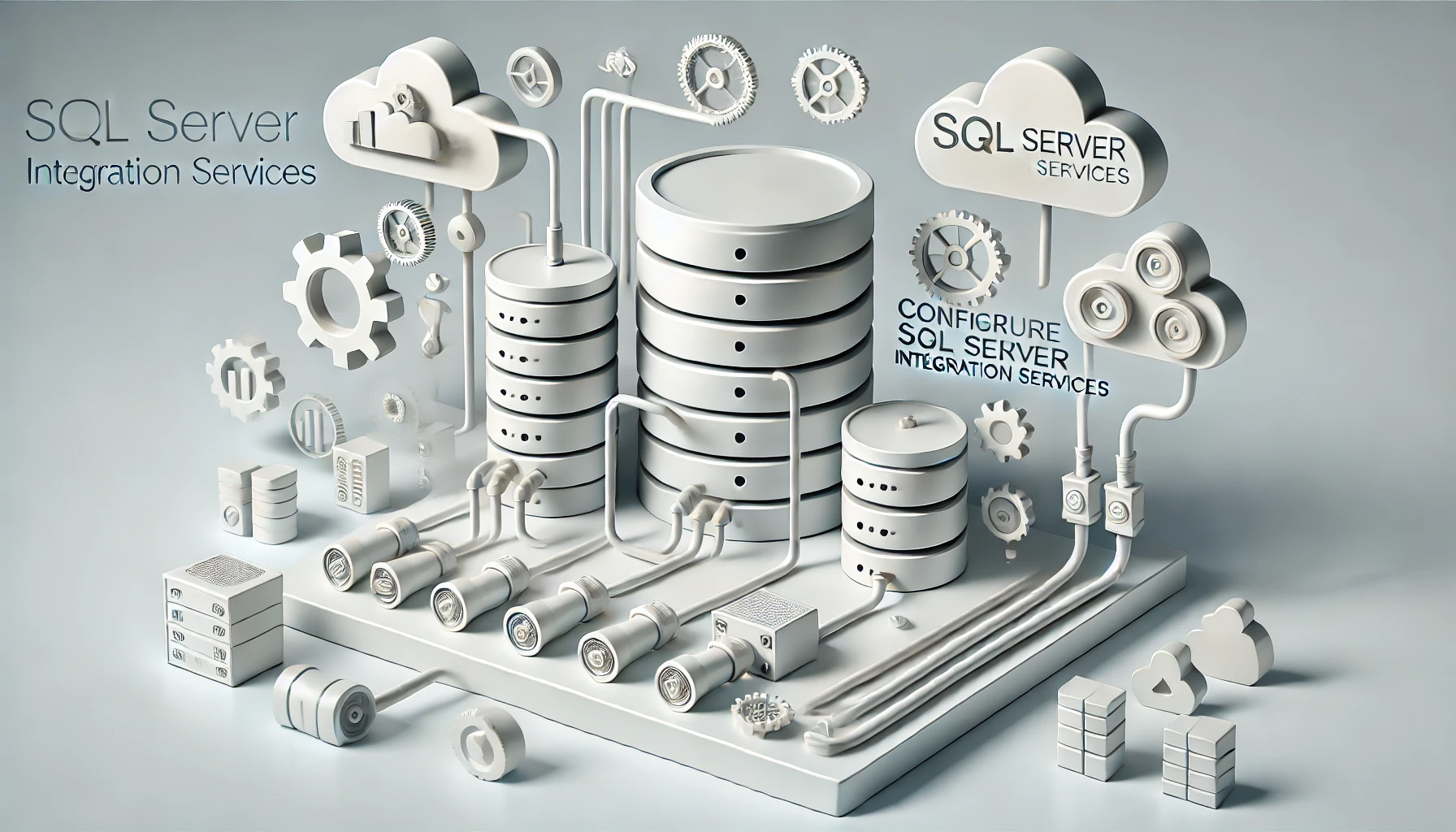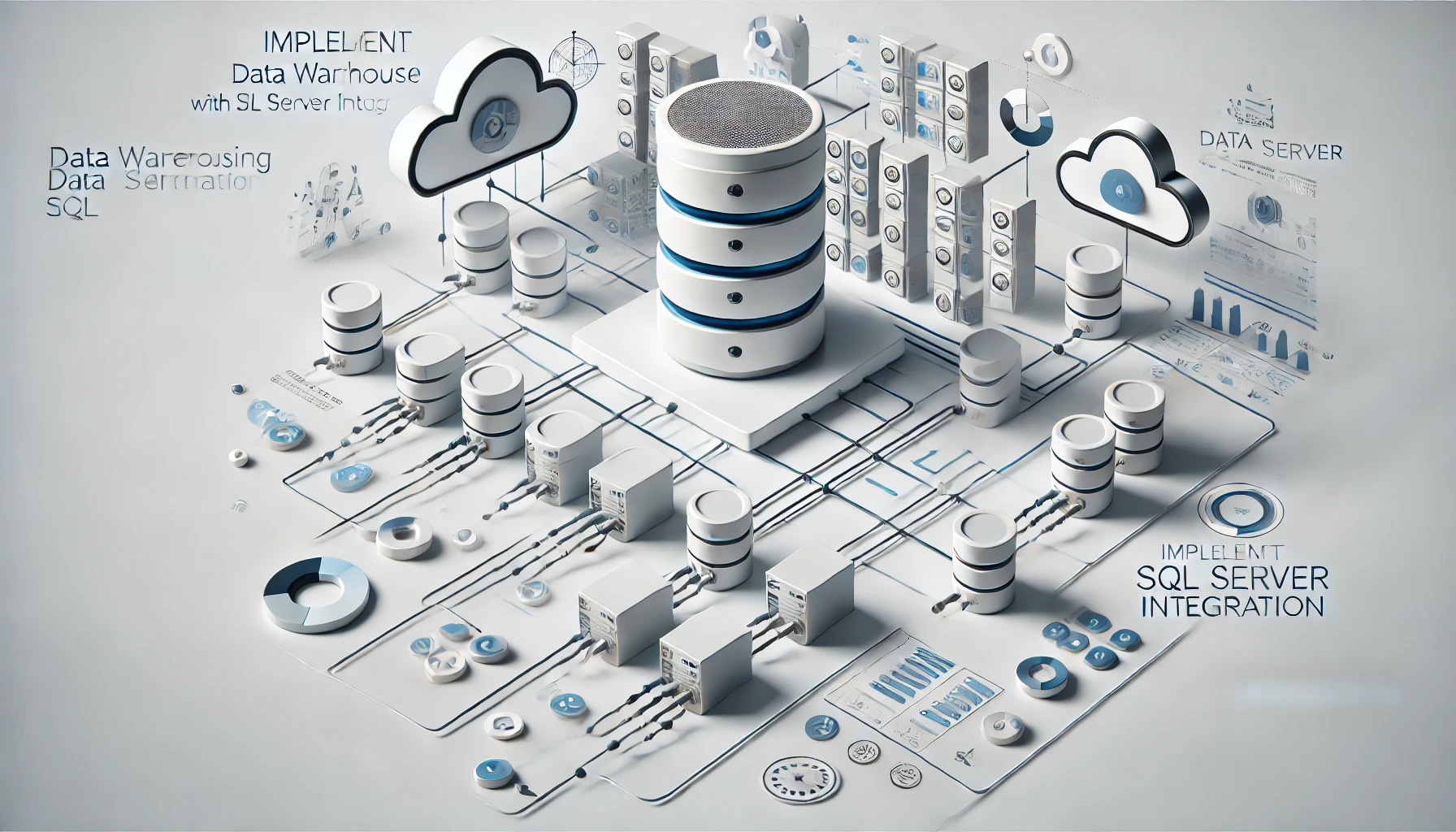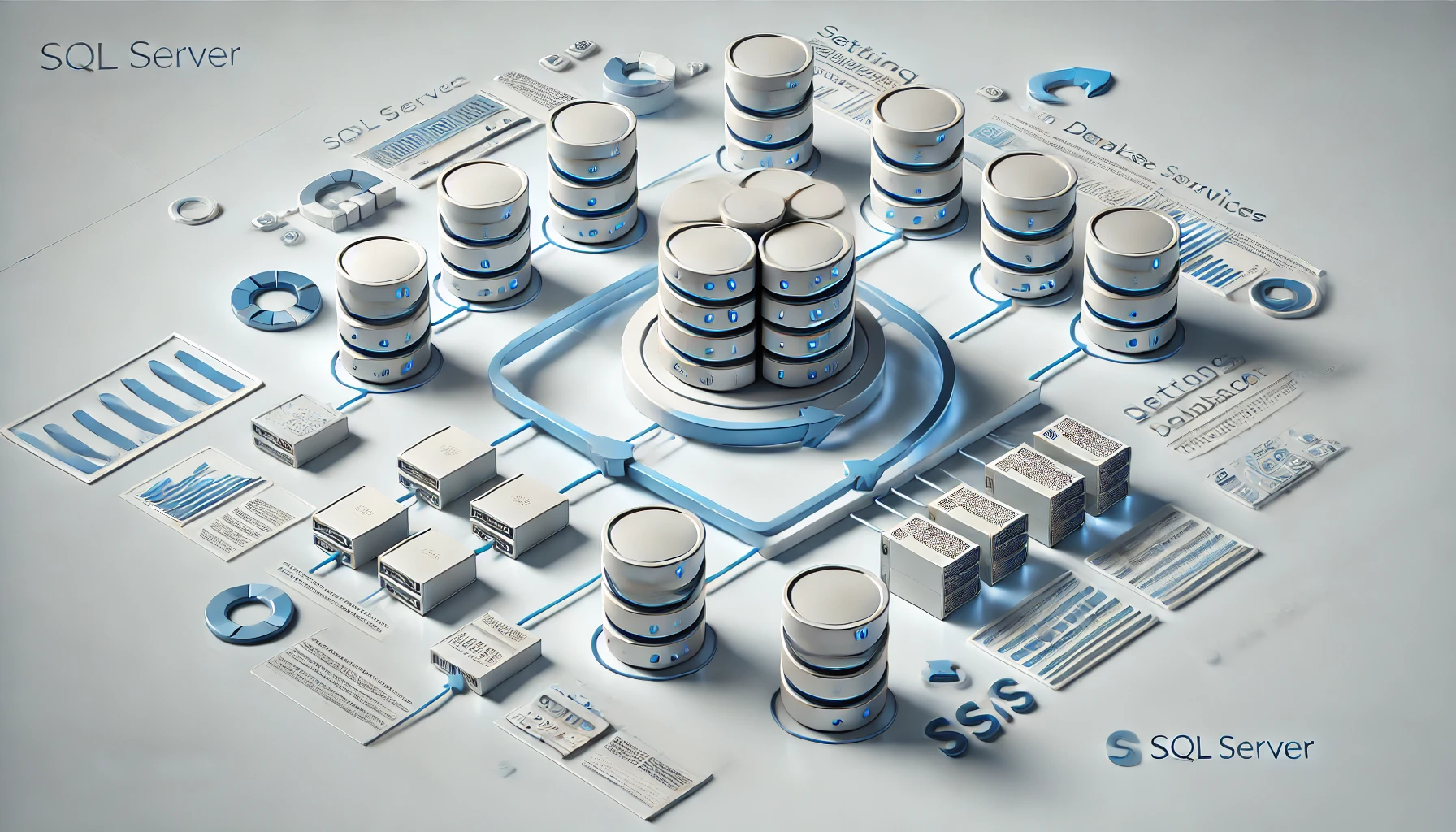To optimize SQL Server Integration Services effectively, you need to delve into various strategies that can streamline performance and enhance efficiency. By focusing on fine-tuning queries, optimizing resource allocation, and utilizing advanced features, you can significantly boost the overall performance of your SSIS packages. However, there are crucial aspects beyond the surface that you must consider to truly maximize the potential of your integration services. Stay tuned to uncover these essential optimization techniques and take your SSIS performance to the next level.
Identify Performance Issues
When optimizing SQL Server Integration Services, the initial step is to identify performance issues that may be affecting the efficiency of your data integration processes. This entails delving into two key areas: query tuning and resource allocation.
Begin by examining query tuning, which involves optimizing the SQL queries within your SSIS packages. Look for inefficient queries that may be causing bottlenecks in your data flow. Consider restructuring queries, adding appropriate indexes, or utilizing query hints to improve performance.
Next, focus on resource allocation. Ensure that your SSIS packages are allocated adequate system resources such as memory and CPU. Monitor resource usage during package execution to identify any constraints that may be impacting performance. Adjust resource settings as needed to optimize performance.
Install SQL Server
To begin the process of optimizing SQL Server Integration Services, the first crucial step is to install SQL Server on the designated server machine. Follow these installation steps to ensure a successful setup: First, download the SQL Server installation files from the official Microsoft website. Next, run the setup executable and choose the installation type (e.g., Basic, Custom). Select the features you want to install, such as Database Engine Services and Integration Services. Proceed with the installation process by configuring server settings, authentication mode, and instance configurations. Once the installation is complete, make sure to apply any necessary service packs or updates to ensure system stability.
If you encounter any issues during the installation, here are some troubleshooting tips: Check the system requirements to ensure compatibility with the server machine. Verify that you have the necessary permissions to install software on the machine. If the installation fails, review the installation logs for error messages and consult online resources or Microsoft support for assistance. By following these installation steps and troubleshooting tips, you can set up SQL Server successfully for optimizing Integration Services.
Setup Integration Services
To effectively set up SQL Server Integration Services, you must first install the necessary components for your specific requirements. Next, configure connection managers to establish connections to data sources and destinations. Lastly, ensure optimal performance by setting up logging options to track and troubleshoot package execution.
Install Necessary Components
You will now proceed to set up Integration Services by installing the necessary components. When setting up Integration Services, it is crucial to carefully select the components that best suit your requirements. Consider the system requirements to ensure smooth installation and operation.
Begin by launching the SQL Server Installation Center and selecting the “New SQL Server stand-alone installation or add features to an existing installation” option. Proceed to the Feature Selection page and select “Integration Services” from the list of components. Ensure that all necessary subcomponents are also selected based on your specific needs.
Verify that the system meets the prerequisites for Integration Services installation, including the appropriate operating system version, available disk space, and other hardware requirements. Follow the on-screen instructions to complete the installation process.
Configure Connection Managers
Setting up Integration Services involves configuring connection managers to establish connections between data sources and destinations within your SQL Server environment. Connection managers act as bridges between your packages and external data sources, enabling seamless data flow. When setting up connection managers, ensure you accurately specify details such as server names, authentication methods, and database credentials to establish successful connections to various data sources.
Error handling is a crucial aspect of configuring connection managers. By setting up appropriate error handling mechanisms within your connection managers, you can ensure that your Integration Services packages respond effectively to unexpected situations. Implementing features like event handlers and error outputs can help you capture and manage errors that may arise during data transfer processes, allowing for better troubleshooting and maintenance of your integration workflows.
Set up Logging Options
When configuring SQL Server Integration Services, establishing logging options is essential for monitoring and tracking the execution of your integration workflows. Logging levels allow you to specify the amount of detail captured during the execution of packages, ranging from minimal information to detailed data that can help in troubleshooting. By defining appropriate logging levels, you can ensure that the right amount of information is recorded for analysis. Additionally, configuring error handling within the logging options enables you to manage how errors are handled during package execution. You can choose to fail a package immediately upon encountering an error, redirect the rows causing the error, or ignore the error and continue processing. Proper error handling settings are crucial for maintaining data integrity and ensuring the reliability of your integration processes. By carefully setting up logging options with the appropriate logging levels and error handling mechanisms, you can effectively monitor and troubleshoot your SQL Server Integration Services workflows.
Analyze Performance Metrics
Optimizing SQL Server Integration Services begins with a crucial step: Analyzing performance metrics. To effectively enhance the performance of your SSIS packages, it is essential to delve into the data visualization and query optimization aspects. Data visualization tools can help you gain insights into the performance of your packages by presenting key metrics in a graphical format, making it easier to identify bottlenecks and areas for improvement.
Query optimization plays a pivotal role in boosting SSIS performance. By fine-tuning your queries, you can significantly enhance the efficiency of data retrieval and processing within your packages. Analyzing query execution plans and identifying opportunities for optimization can lead to substantial performance gains. Remember to monitor query performance regularly and make adjustments as needed to ensure optimal operation.
Implement Performance-Boosting Strategies
To enhance the performance of your SQL Server Integration Services, consider implementing key strategies. Cache data to speed up processing, utilize parallel processing for increased efficiency, and continuously monitor and optimize your workflows. These steps can significantly boost the overall performance of your integration processes.
Cache Data for Speed
By caching data for speed in SQL Server Integration Services, you can significantly enhance performance by reducing the need to repeatedly access the same data from its original source. Data caching involves storing frequently accessed data in memory, thus optimizing memory utilization and reducing the time needed to retrieve information from disk or external sources. When you cache data effectively, you minimize the impact on the network and disk I/O, resulting in faster data processing and improved overall performance of your SSIS packages.
To maximize the benefits of data caching, consider the size of the data being cached, the frequency of access, and the available memory resources on the server. By strategically caching data at key points in your SSIS workflows, you can streamline data retrieval processes and minimize the need for redundant queries or external requests. This approach not only accelerates data processing but also enhances the efficiency of your integration tasks.
Use Parallel Processing
When enhancing the performance of your SQL Server Integration Services, utilizing parallel processing is a pivotal strategy to boost efficiency. By leveraging parallel processing, you can take advantage of multithreading benefits, allowing multiple tasks to run simultaneously. This approach significantly reduces processing time and enhances overall performance.
One key aspect to consider when implementing parallel processing is resource allocation. Properly distributing resources among parallel tasks ensures optimal performance without causing bottlenecks. By efficiently managing resource allocation, you can prevent overloading specific components and maintain a balanced workload across the system.
Furthermore, parallel processing enables you to maximize the utilization of available resources, such as CPU and memory, effectively increasing the throughput of your SSIS packages. This approach not only speeds up data processing but also improves the scalability of your integration processes. By carefully planning and implementing parallel processing in your SSIS solutions, you can achieve significant performance improvements and streamline your data integration workflows.
Monitor and Optimize
Shifting focus to monitoring and optimizing your SQL Server Integration Services (SSIS) performance involves implementing targeted strategies to enhance efficiency. Performance monitoring plays a crucial role in ensuring your SSIS packages run smoothly. By regularly monitoring key performance indicators such as execution times, data flow rates, and memory consumption, you can identify bottlenecks and areas for improvement. Troubleshooting performance issues promptly is essential to maintain optimal SSIS performance.
Resource utilization is another critical aspect to consider when optimizing SSIS. Analyzing CPU, memory, and disk usage can help you identify underutilized resources or potential constraints that may impact performance. Scalability is key in ensuring your SSIS solutions can handle increasing workloads efficiently. By designing packages that can scale horizontally or vertically as needed, you can adapt to changing demands without sacrificing performance.
Test Optimization
To enhance the efficiency of your testing processes within SQL Server Integration Services (SSIS), optimizing the testing phase is crucial. When focusing on test optimization, consider utilizing data sampling techniques to ensure that your tests cover a representative subset of your data. By selecting a small but diverse sample, you can efficiently evaluate the performance and accuracy of your SSIS packages without the need to process the entire dataset. Additionally, prioritize query tuning during testing to enhance the speed and efficiency of your data retrieval and transformation processes. Fine-tuning your queries can significantly reduce execution times and resource consumption, ultimately leading to a more streamlined and effective SSIS solution. Remember to analyze the execution plans of your queries to identify any bottlenecks or inefficiencies that can be addressed through optimization. By integrating data sampling and query tuning into your testing phase, you can elevate the performance and reliability of your SSIS packages.
Frequently Asked Questions
How Can I Troubleshoot Package Failures in SSIS?
To troubleshoot package failures in SSIS, ensure robust error handling and logging. Check data flow and transformations for issues. Review logs, examine error messages, and verify data sources. Use breakpoints for debugging and step through the package for pinpointing errors.
What Are the Best Practices for SSIS Package Design?
When designing SSIS packages, focus on error handling and data transformation. Implement robust error handling to catch and manage failures effectively. Streamline data transformation processes for optimal performance. Following these best practices ensures efficient package design.
How Do I Optimize SSIS for Large Data Volumes?
To optimize SSIS for large data volumes, focus on performance tuning. Implement scalability solutions like partitioning, parallel processing, and memory management. Utilize efficient data flow transformations and consider using incremental loading to enhance overall SSIS package performance.
Can I Monitor SSIS Performance in Real-Time?
To enhance your SSIS experience, ensure real-time monitoring for optimal performance. Keep a close watch on system metrics to optimize data flow efficiency and identify bottlenecks promptly. Take proactive steps to boost overall operation.
What Security Considerations Should I Keep in Mind for SSIS Optimization?
When optimizing SSIS, prioritize security. Implement data encryption to protect sensitive information. Enforce access control to limit who can view or alter packages. Ensure security measures align with best practices to safeguard your data.



